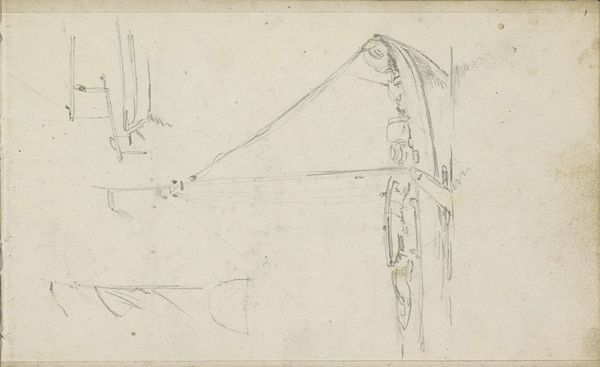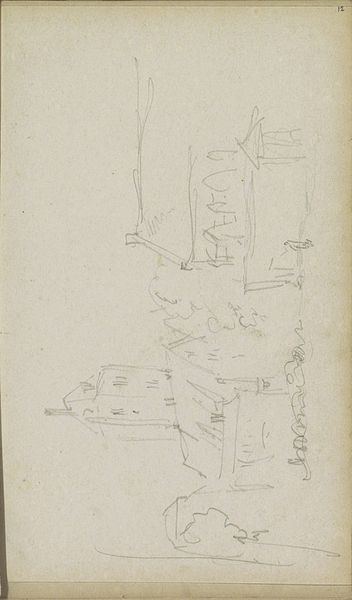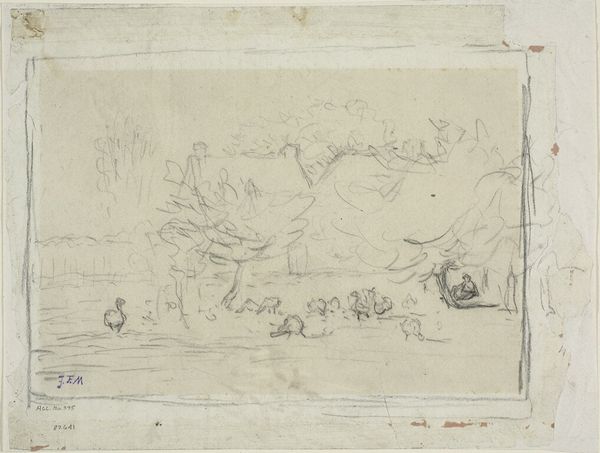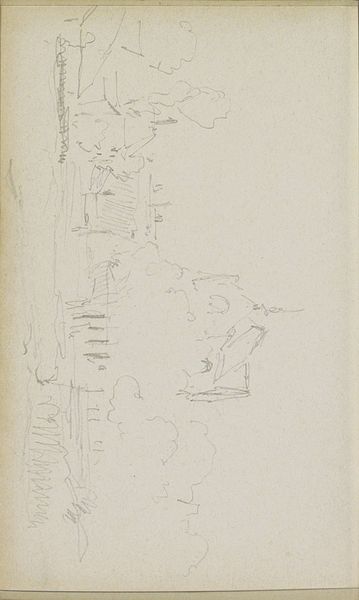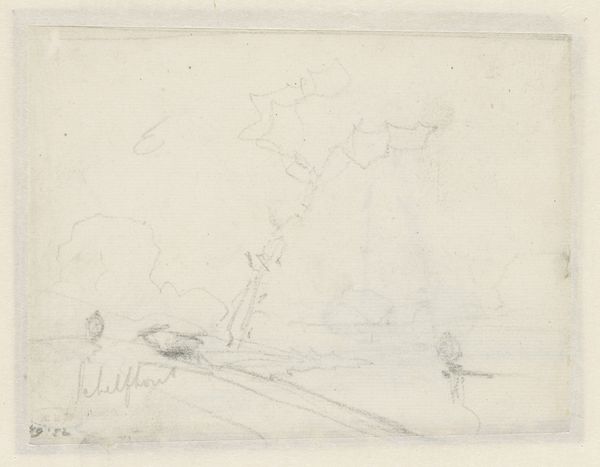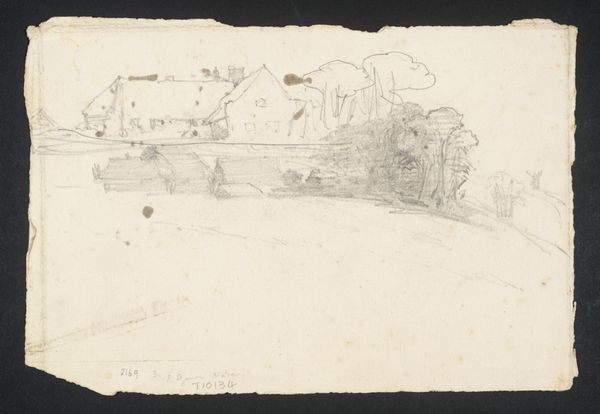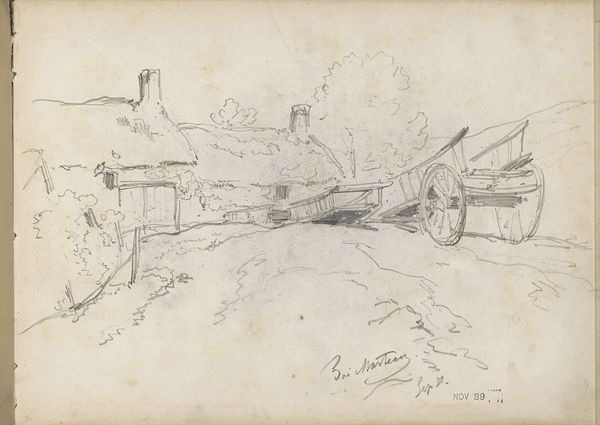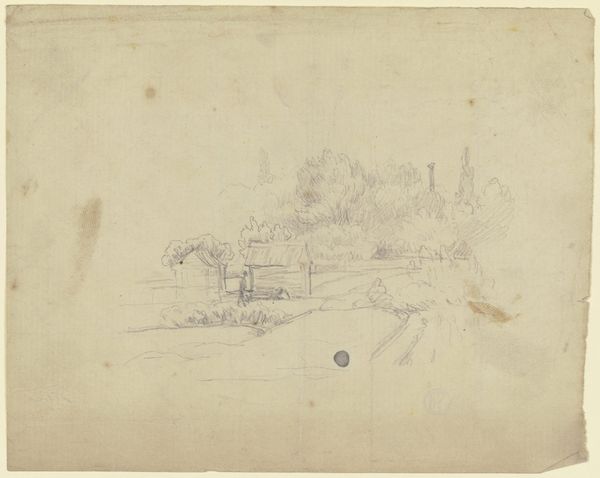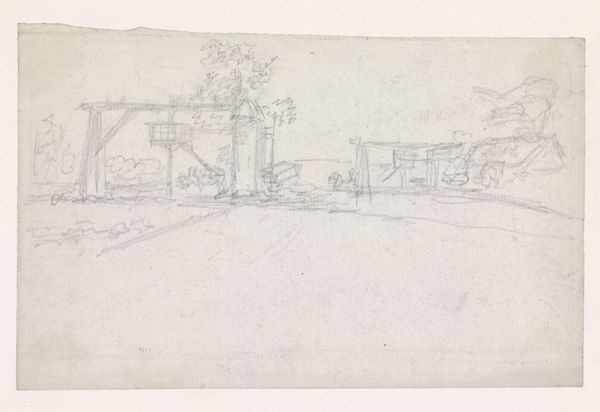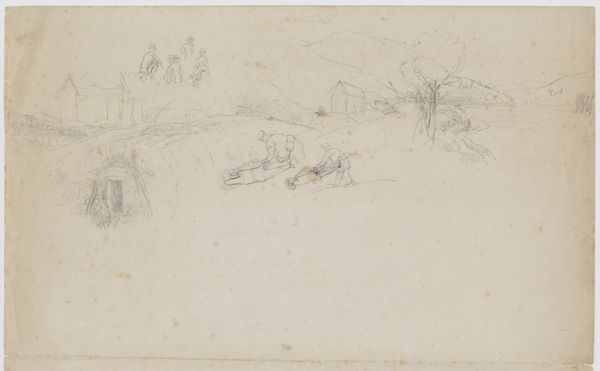
drawing, paper, ink
#
drawing
#
landscape
#
paper
#
ink
#
romanticism
#
realism
Dimensions: 137 mm (width) x 83 mm (height) (bladmaal)
Editor: Here we have "Vejby præstegård set fra syd," or "Vejby Parsonage Seen from the South," a pen and ink drawing on paper, created by Johan Thomas Lundbye in 1843. There's a delicate, almost unfinished quality to the sketch. What strikes me most is its stark simplicity. What do you see in this piece? Curator: It's fascinating how Lundbye utilizes the immediacy of ink to depict a seemingly mundane scene, don’t you think? This choice of material isn’t accidental; ink and paper allowed for quick, portable documentation. It speaks to a shift in artistic practice, towards valuing direct engagement with the subject and a potential for mass reproduction, as drawings were essential precursors to prints. Consider the labour involved, too, from papermaking to the preparation of ink, materials accessible to a rising middle class, changing both production and consumption of art. How might this accessibility influence the status of landscape art at the time? Editor: That's an interesting point. I hadn't considered the social implications of the medium itself. So, you're saying the choice of ink and paper, in a way, democratized landscape art? Curator: Precisely. Prior to this, landscapes were largely commissioned by the aristocracy and rendered in oil, showcasing wealth and grandeur. Here, the modest materials shift our attention. We look to the artistic decisions behind its creation. The seemingly 'unfinished' quality becomes a signifier of direct, unmediated engagement with the scene. Editor: That's given me a completely new perspective on this drawing. It’s more than just a landscape; it's a document of its own making, reflecting broader societal changes in artistic practice and consumption. Curator: Indeed, and remember the power of materiality. It's the material reality of art that anchors it in our world.
Comments
No comments
Be the first to comment and join the conversation on the ultimate creative platform.
